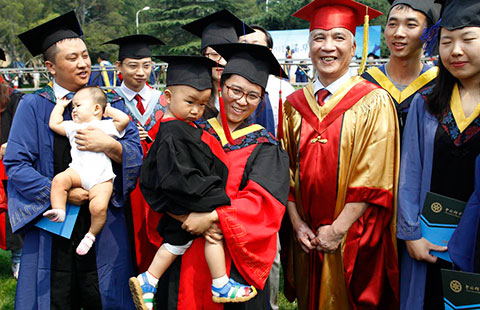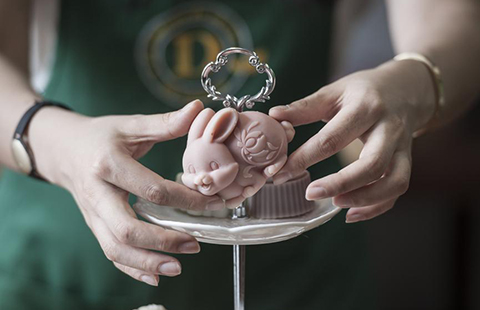China's Chery ramping up auto production in Brazil
Updated: 2015-07-06 04:51
By BRUNA GAMA in Rio de Janeiro(China Daily)
|
||||||||
|
 |
|
A model poses with an Arrizo 7 designed by Chinese automaker Chery at the Sao Paulo Auto Show in November 2014 in Brazil. XINHUA / XU ZIJIAN |
For Chery wants to produce 10,000 vehicles in its Brazilian factory this year and expand its production and position in the country, Peng Jian, Chery’s president for Brazil, told China Daily in an exclusive interview.
Chery is working to offer new options for Brazilian consumers, Peng said. Although Chinese manufacturers have been operating in Brazil for some years, consumers remain relatively unaccustomed to Chinese vehicles and are much more familiar with the four big players in Brazil: Volkswagen, GM, Ford and Fiat.
At a moment when the automotive industry in Brazil is facing a crisis, with both production and sales down, and other car manufacturers letting go of hundreds of workers, Chery is expanding.
Chery started operating in Brazil in 2009, importing the QQ, Tiggo and Celer models. Soon after, the company announced its intention to open a local factory, with investments of $500 million. The company chose a site in Jacarei, a town of some 200,000 in Sao Paulo state, which is where the majority of automobile factories in Brazil are located.
The factory opened in August 2014 and began producing the Celer model, which became the first vehicle from a Chinese manufacturer produced in Brazil. The Brazilian make was modified to adapt to local preferences.
“On the outside the car looks the same, but some components changed, like the shifting gear,” Peng said.
Production is focused on two versions of the Celer (hatchback and sedan), but the Jacarei unit will start producing the new versions of the QQ and Tiggo models. That means Chery will compete in several categories in Brazil: compact cars, sedans and SUVs.
Production will not be restricted to Brazil. Chery also will export to other South American countries such as Uruguay and Argentina.
Chery announced the construction of a giant industrial pole around the Jacarei factory during Premier Li Keqiang’s visit to Brazil in May.
The 4.5 million-kilometer area will feature 25 businesses, such as warehouses, logistics companies, maintenance, services and components companies, Peng said. Investments in the pole were estimated at $700 million.
“The idea is having auto-related companies in the area around the factory,” he told China Daily.
With the industrial pole, Chery hopes to be more competitive in Brazil on price, as more components will be produced locally, and the company also will have nearby warehouses and other facilities. The auto industry has slumped in Brazil, and Chery hopes that local production will better position it with consumers.
Vehicle sales in Brazil dropped 23.9 percent in the first half of 2015 and are expected to fall 23 percent in the full year compared with 2014.
The Brazilian government offers incentives for foreign manufacturers, reducing taxes for those that make the majority of a car in Brazil and for those that invest in innovation and research.
The companies in the pole will serve other businesses as well, which should boost the local economy and generate jobs. Chery has a good relationship with local authorities, conducting meetings and collaborating on local training programs and with educational institutions, Peng said.
The industrial pole companies will be introduced gradually over the next few years, and may generate as many as 7,000 jobs in Jacarei, Peng said. Chery now employs about 500 people in Jacarei.
Chery does not plan to open a new factory in Brazil, but is concentrating on the Jacarei pole to strengthen its position in Brazil and elsewhere in South America.
“We are focusing in this area for now,” he said.
Chery is not the only Chinese manufacturer in Brazil; Jac sells several models in the country, all imported, and is building a factory in Camaçari, Bahia state, which is expected to be operational next year.
- Injured ROK tourists in intensive care
- 36 dead, 26 missing after banca capsized in C. Philippines
- Thai navy plans to buy three Chinese subs
- Mass casualties in Indonesian military plane crash
- Japan's LDP lawmaker denounces Abe's security policies
- More than 100 feared dead in Indonesian military plane crash

 People take part in Independence Day parade in Washington
People take part in Independence Day parade in Washington
 Unusual heat wave sweeps across Europe
Unusual heat wave sweeps across Europe
 Class of 2015 celebrates in Beijing
Class of 2015 celebrates in Beijing
 Heavy rainfall causes landslide in NW China
Heavy rainfall causes landslide in NW China
 Across America over the week (June 26-July 2)
Across America over the week (June 26-July 2)
 Solar-powered plane breaks solo flight record
Solar-powered plane breaks solo flight record
 A soap maker's fragrant life
A soap maker's fragrant life
 Ten photos you don't wanna miss - July 3
Ten photos you don't wanna miss - July 3
Most Viewed
Editor's Picks

|

|

|

|

|

|
Today's Top News
US urged to 'correctly perceive China's strategic intentions'
China brokers pledge 120b yuan to stabilize stock market
For PetroChina, move to Houston pays off
China-France ties 'benefit all'
Concern over US military strategy
Will Alibaba, Amazon clash?
China-France ties 'benefit all'
Veteran diplomat in Havana shortlisted for ambassador
US Weekly

|

|






